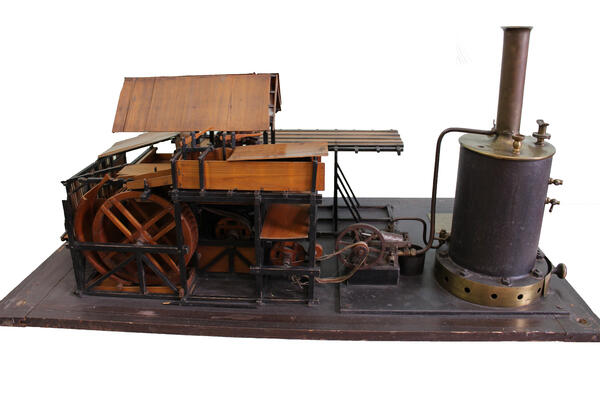Veniamin Astashev (1837-1889) — son of the famous Tomsk gold miner Ivan Astashev. He passed all stages of his military career from a cadet to a General, and participated in many military campaign. After the death of his father, Astashev did not leave the military service, but managed to combine the family business with it. During the period from 1874 to 1879, he, together with officials and other gold producers, created the largest gold-mining partnerships in Russia ‘Berezovsky’ and ‘Miasskoye’, and also organized the ‘Altay gold-mining business’ company.
The gold mining in Siberia began in the 30s of the XIX century, and within a decade the region was flourishing in gold mining. The Yenisey province became the main supplier of gold in Russia — in 1845 it provided almost half of its world production. No wonder on the coat of arms of Krasnoyarsk, the capital of the Yenisey region, appeared ‘in a scarlet shield of gold, standing on its hind legs, a lion, which carries a sickle and a shovel in its front paws of the same metal’. The sickle and shovel were the indispensable attributes of the peasant and the gold digger.
The southern system was dominated by clayey sands, more viscous and difficult to wash. For washing such sands, a cup-shaped gold washing machine was used — it was built in 1834 at the Bogoslovsky factories. It was a high-tech device at that time with round screens, which for their shape were called ‘bowl’.
The machine used special rods to grind and wipe the rock. The water entering the bowl washed the sands and carried the gold-bearing mass to the inclined plane and then to the system of conical and finishing cradles (devices for washing gold-bearing sands). The pebbles accumulated in the bowl were released through a special hatch and after inspection were transported to the dump.
The model scale of this XIX century gold washing machine can be considered an illustration of the era of Siberian gold mining and a vivid example of merchant patronage. A bronze plaque installed at the base of the model scale reads: ‘To the Yenisei Museum from the southern gold mines of V. I. Astasheva. Gold washing bowl Scale 1/28 with a steam engine. 1885’.
The gold mining in Siberia began in the 30s of the XIX century, and within a decade the region was flourishing in gold mining. The Yenisey province became the main supplier of gold in Russia — in 1845 it provided almost half of its world production. No wonder on the coat of arms of Krasnoyarsk, the capital of the Yenisey region, appeared ‘in a scarlet shield of gold, standing on its hind legs, a lion, which carries a sickle and a shovel in its front paws of the same metal’. The sickle and shovel were the indispensable attributes of the peasant and the gold digger.
The southern system was dominated by clayey sands, more viscous and difficult to wash. For washing such sands, a cup-shaped gold washing machine was used — it was built in 1834 at the Bogoslovsky factories. It was a high-tech device at that time with round screens, which for their shape were called ‘bowl’.
The machine used special rods to grind and wipe the rock. The water entering the bowl washed the sands and carried the gold-bearing mass to the inclined plane and then to the system of conical and finishing cradles (devices for washing gold-bearing sands). The pebbles accumulated in the bowl were released through a special hatch and after inspection were transported to the dump.
The model scale of this XIX century gold washing machine can be considered an illustration of the era of Siberian gold mining and a vivid example of merchant patronage. A bronze plaque installed at the base of the model scale reads: ‘To the Yenisei Museum from the southern gold mines of V. I. Astasheva. Gold washing bowl Scale 1/28 with a steam engine. 1885’.



